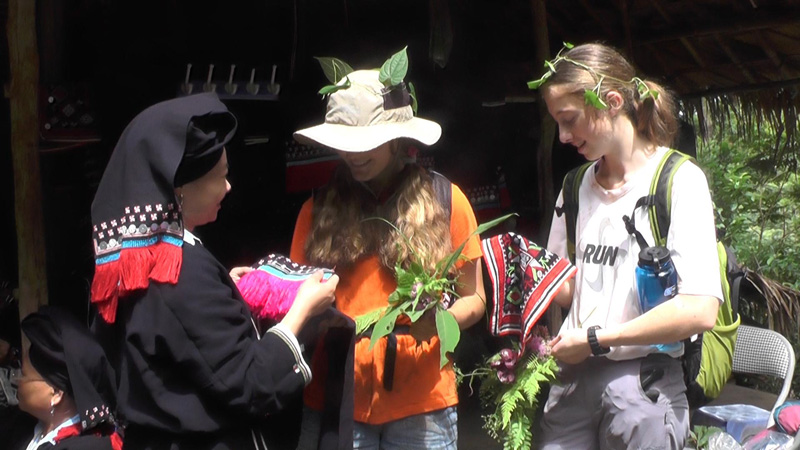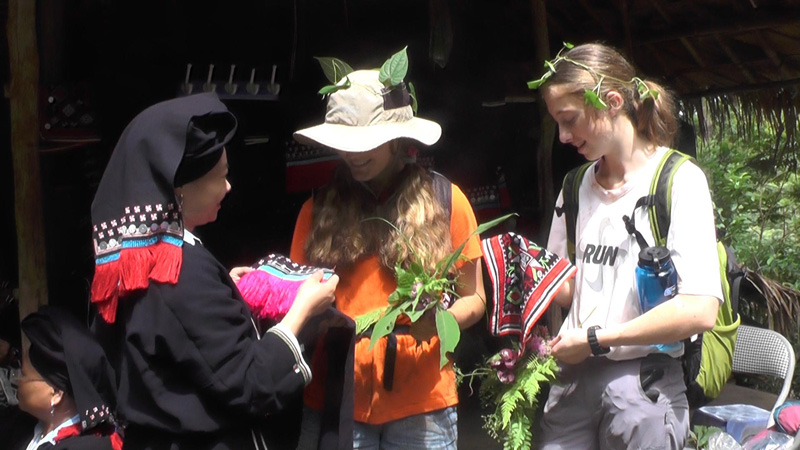
(HBO) - Da Bac district in the northwestern province of Hoa Binh has created a facelift in infrastructure over the recent years, helping boost production and increase local incomes. Particularly, with the high determination of the district’s Party Committee and People’s Committee, Da Bac has achieved positive outcomes in rural building and tourism development.
Tourists visit Sung hamlet, Cao Son commune.
With
the support of local authorities, villagers have changed their mindset to make
investment in tourism development, especially tapping cultural values to
develop community-based tourism. Ke, Sung, and Da Bia hamlets have made their
way to the local tourism map, luring both domestic and international tourists.
Da Bia hamlet is one of the three community-based tourism sites nationwide to
receive the ASEAN community tourism award in 2019.
Besides, the district is also tapping fishery
development potential by building a production cooperation chain and market
connection. Many businesses have invested in building brands for Da River’s
fish, contributing to poverty reduction in the area.
The mountainous district is also leading in
applying information and management technology. Previously, it took several
days to reach Da Bac’s hamlets as they were accessible only by foot, but now it
is just a few hours by cars. The production mindset of local farmers has also
changed. Many have learned to use and manage banks’ capital to develop animal
husbandry, grow forestry, and fruits.
In the five-year implementation of the
resolution adopted at the district’s 24th Party Congress, Da Bac district
reached and surpassed 23 out of the 24 criteria. The district focused on
addressing natural disasters’ consequences and soon stabilised the life of
locals victimised by flash floods and landslides.
In the coming years, local authorities
will push ahead with reforms and increase capacity, responsibility of officials
and Party members, as well as creating social consensus to help the district
get out of poverty and achieve sustainable development./.
The Standing Board of the Hoa Binh provincial Party Committee has agreed in principle on a proposal by the Standing Board of the Party Committee of Hoa Binh city to gather feedback on the city’s 1:2000 zoning plan, which forms part of its broader urban development strategy.
Hoa Binh province has made notable progress in public administration reform and digital government development, with the satisfaction index among citizens and businesses reaching over 84%, according to recent government evaluations.
Thanks to great efforts by local authorities in recent times, the governance and public administration performance of Mai Chau district has been significantly improved.
In the afternoon of June 6, the Party Committee, the People's Council, the People's Committee and the Fatherland Front of Lac Son district solemnly held a meeting to celebrate the 139th anniversary of the district's founding (1886–2025) and the 79th anniversary of the establishment of the district's Party Committee (1946–2025). There was the attendance of Mr. Bui Van Thang, the Vice Chairman of the Provincial People's Council; Mr. Quach Tat Liem, the Vice Chairman of the Provincial People's Committee; Ms. Dang Bich Ngoc, the Deputy Head of the National Assembly Delegation of the province; as well as the former leaders of the province and district through various periods, who are the natives of the district.
Implementing the Politburo’s Resolution No. 57-NQ/TW on breakthroughs in science – technology, innovation, and digital transformation is a golden opportunity for the northern mountainous province of Hoa Binh to renew growth model, improve competitive edge and shorten digital gap.
Resolution 57-NQ/TW, issued by the Politburo on December 22, 2024, identifies sci-tech, innovation, and digital transformation as strategic breakthroughs to build a developed and prosperous nation. In Hoa Binh province, this spirit is not just a slogan, it’s being put into action through concrete initiatives that form a "new development triangle”: digital citizenship, digital economy, and digital administration.



